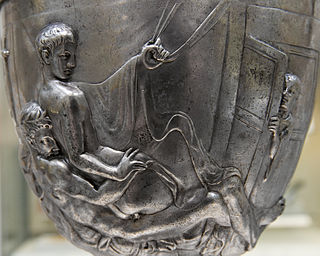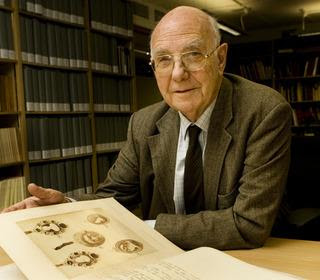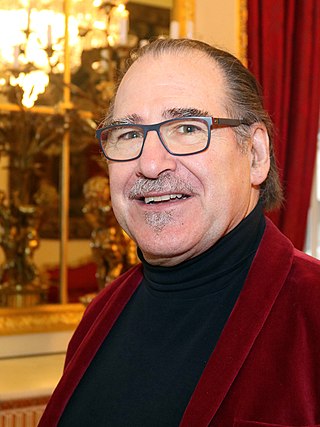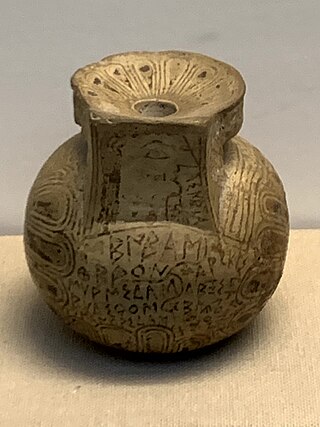Related Research Articles

The Parthenon is a former temple on the Athenian Acropolis, Greece, that was dedicated to the goddess Athena. Its decorative sculptures are considered some of the high points of classical Greek art, and the Parthenon is considered an enduring symbol of Ancient Greece, democracy, and Western civilization.

The Portland Vase is a Roman cameo glass vase, which is dated between AD 1 and AD 25, though low BC dates have some scholarly support. It is the best known piece of Roman cameo glass and has served as an inspiration to many glass and porcelain makers from about the beginning of the 18th century onwards. It was first recorded in Rome in 1600–1601, and since 1810 has been in the British Museum in London. The museum held it on loan from the dukes of Portland until 1945, and bought it from them that year. It is normally on display in Room 70.

The Elgin Marbles are a collection of Ancient Greek sculptures from the Parthenon and other structures from the Acropolis of Athens, removed from Ottoman Greece and shipped to Britain by agents of Thomas Bruce, 7th Earl of Elgin, and now held in the British Museum in London. The majority of the sculptures were created in the 5th century BC under the direction of sculptor and architect Phidias.

The Warren Cup is an ancient Greco-Roman silver drinking cup decorated in relief with two images of male same-sex acts. It was purchased by the British Museum for £1.8 million in 1999, the most expensive single purchase by the museum at that time. It is usually dated to the time of the Julio-Claudian dynasty.

The sculpture of ancient Greece is the main surviving type of fine ancient Greek art as, with the exception of painted ancient Greek pottery, almost no ancient Greek painting survives. Modern scholarship identifies three major stages in monumental sculpture in bronze and stone: the Archaic, Classical and Hellenistic. At all periods there were great numbers of Greek terracotta figurines and small sculptures in metal and other materials.

The Parthenon frieze is the high-relief Pentelic marble sculpture created to adorn the upper part of the Parthenon's naos.

Sir John Boardman, was a British classical archaeologist and art historian of ancient Greek art. Educated at Chigwell School in Essex and at Magdalene College, Cambridge, Boardman worked as assistant director of the British School at Athens between 1952 and 1955 before taking up a position as an assistant keeper at the Ashmolean Museum, part of the University of Oxford. He succeeded John Beazley as Lincoln Professor of Classical Archaeology and Art at the university in 1978, remaining in post until his retirement in 1994.

The Gemma Claudia is a very finely carved and detailed, five-layered, cameo in sardonyx, a type of onyx that has parallel layers of sard which depicts members of the Roman imperial Julio-Claudian dynasty. It is believed to have been created in around 49 AD and by the 17th century was owned by the Habsburg Holy Roman Emperors, later passing to the Kunsthistorisches Museum in Vienna. It is 12 cm high and set in an 18th century gold circlet.

Joan Breton Connelly is an American classical archaeologist and Professor of Classics and Art History at New York University. She is Director of the Yeronisos Island Excavations and Field School in Cyprus. Connelly was awarded a MacArthur Fellowship in 1996. She received the Archaeological Institute of America Excellence in Undergraduate Teaching Award in 2007 and held the Lillian Vernon Chair for Teaching Excellence at New York University from 2002 to 2004. She is an Honorary Citizen of the Municipality of Peyia, Republic of Cyprus.
Ian Dennis Jenkins was a Senior Curator at the British Museum who was an expert on ancient Greece and specialised in ancient Greek sculpture. Jenkins published a number of books and more than a hundred articles. He led the British Museum's excavations at Cnidus and was involved in the debate over the ownership of the Elgin Marbles.

Charles Martin Robertson, known as Martin Robertson, was a British classical scholar and poet. He specialised in the art and archaeology of Ancient Greece, and was best known for his 1975 publication, A History of Greek Art.

Ancient Greek art stands out among that of other ancient cultures for its development of naturalistic but idealized depictions of the human body, in which largely nude male figures were generally the focus of innovation. The rate of stylistic development between about 750 and 300 BC was remarkable by ancient standards, and in surviving works is best seen in sculpture. There were important innovations in painting, which have to be essentially reconstructed due to the lack of original survivals of quality, other than the distinct field of painted pottery.
Professor Peter Edgar Corbett, was a British art historian and classical scholar.
Jenifer Neils is an American classical archaeologist and was from July 2017 to June 2022 director of the American School of Classical Studies at Athens. Formerly she was the Elsie B. Smith Professor in the Liberal Arts in the Department of Classics at Case Western Reserve University.

Nigel Reuben Rook Williams was an English conservator and expert on the restoration of ceramics and glass. From 1961 until his death he worked at the British Museum, where he became the Chief Conservator of Ceramics and Glass in 1983. There his work included the successful restorations of the Sutton Hoo helmet and the Portland Vase.

Jack Ogden, FSA, FGA, is a British jewellery historian with a particular interest in the development of Materials and technology. He is considered one of the foremost experts in his field. He is the current President of The Society of Jewellery Historians, having held the position since February 2018, and was appointed visiting professor of Ancient Jewellery, Material and Technology, at the Birmingham School of Jewellery Birmingham City University in 2019

Denys Eyre Lankester Haynes was an English classical scholar, archaeologist, and museum curator, who specialised in the full range of classical archaeology. He was Keeper of Greek and Roman Antiquities at the British Museum between 1956 and 1976. He was additionally Geddes–Harrower Professor of Greek Art and Archaeology at the University of Aberdeen from 1972 to 1973, and, in retirement, visitor to the Ashmolean Museum from 1979 to 1987. He had served in military intelligence during the Second World War.
Olga Palagia is Professor of Classical Archaeology at the National and Kapodistrian University of Athens and is a leading expert on ancient Greek sculpture. She is known in particular for her work on sculpture in ancient Athens and has edited a number of key handbooks on Greek sculpture.

The Aineta aryballos is an Ancient Greek aryballos, made between approximately 625 and 570 BCE in the city of Corinth in southern Greece. Approximately 6.35 centimetres (2.50 in) in both height and diameter, it was intended to contain perfumed oil or unguent, and is likely to have been owned by a high-class courtesan by the name of Aineta, who may be portrayed in a drawing on its handle. The vase's illegal sale to the British Museum in 1865 led to the prosecution of its seller, the Athenian professor and art dealer Athanasios Rhousopoulos, and exposed his widespread involvement in antiquities crime.
References
- ↑ Timpson, Trevor (12 September 2007). "Fear and fury among the Marbles". BBC News.
- 1 2 "British Museum - Dyfri J R Williams". 7 January 2009. Archived from the original on 7 January 2009. Retrieved 23 May 2014.